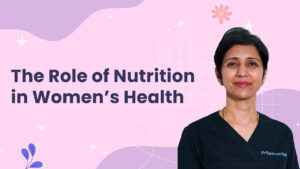PMS is an issue that impacts a woman’s feelings, physical wellbeing, and behavior during specific days of her menstruation, usually just before her menstrual cycle. She may also experience physiological changes such as tiredness, bloating, or hunger pangs.
Premenstrual symptoms normally appear five to eleven days before periods and disappear once menstruation begins. Many experts claim it has something to do with a change in hormones and serotonin levels at the beginning of menstruation. During the specific times of the month, estrogen and progesterone levels rise. Anxiety and depression, mood swings, and aggressiveness can also be associated with PMS due to hormonal changes.
The exact cause of PMS is unknown. It could be due to changing hormone and serotonin levels. What a woman consumes and drinks can also affect her health and well-being.
You can, however, minimize these symptoms. For various people, multiple methods work.
PMS Diet Plan and Lifestyle
Slight dietary adjustments or modifications, for instance, can help in the reduction or management of Premenstrual symptoms. Many women find exercises very helpful.
Diet For PMS
Reduce the Intake of Salt: Sodium can enhance water retention in the body. Decrease the amount of salt in your meals if you have bloating, swelling feet and hands, or tender breasts during your menstrual cycle. Salt can be found in a wide range of foods and snacks – so make your own meals as much as possible and avoid junk foods.
limit the intake of alcohol and caffeine
Coffee might help you stay awake and a glass of wine can help you relax, but it can also make your PMS symptoms worse. Alcohol and caffeine both have the potential to interrupt your sleep as well – which is again a potential factor that interferes with your PMS – making it troublesome to a certain extent. When it comes to the foods that worsen PMS, alcohol, and coffee top the list.
Add Complex Carbs to Your Diet
Intense food cravings and unpleasant moods are frequently caused by changes in your insulin level. Complex carbs slowly assimilate into your system, helping suppress hunger and calm your mind. Foods high in complex carbohydrates include whole grains, barley, and beans. Fruits and vegetables are also rich in complex carbohydrates. Complex carbohydrates are the best choice because they also keep your blood sugar levels steady.
Studies have shown that including lots of citrus fruits, berries, and vegetables in your diet help to reduce heavy bleeding. Aim for 3 servings of whole grains, 3-4 servings of veggies, and 2-3 servings of fruits a day.
Eat Foods Rich in Calcium and Vitamin D
According to several studies, a sufficient amount of vitamin D and Calcium consumption may help lessen PMS symptoms. Reduced-fat milk, yogurt, and cheese are all good options to include in your meals. If you can’t consume dairy, a vitamin D and Calcium supplement may be beneficial.
PMS Diet Plan and Supplements
Include Iron-Rich Foods in Your Meals
Because you lose a lot of iron when you menstruate, consuming enough iron from your diet is significant both during and before your menstruation. Anemia can be prevented by eating a diet high in iron.
Iron-rich foods: To replace iron loss from menstrual flow you need more iron. It also prevents fatigue and tiredness. If you are a vegetarian – you could be at risk of developing vitamin B12 deficiency and iron-deficiency anemia as well. Therefore, you must take iron and vitamin B-12 fortified vegetables and also food rich in vitamin C to improve iron absorption from foods. Eat fortified cereals and legumes. And also have citrus fruits or juice with your morning cereal or toast. Non-vegetarians can have morning toast with egg and fruit juice rich in vitamin C. They can also take poultry and lean meat – red meat is a strict no.
Never Skip Meals
Eat regular snacks and meals throughout the day to prevent binge eating. If you’re suffering from Premenstrual symptoms, missing a meal will make you cranky as your blood glucose levels fall.
Intake Of Vital Supplements
Health experts advise their patients to start treating PMS symptoms with a mix of yoga, stress reduction, and vitamins, in addition to urging them to eat a nutritious diet. They also recommend patients take a daily multivitamin if needed.
Physical Activity: Apart from the PMS diet plan, moderate physical activity, walking, yoga, and any other light physical activity helps in relieving pain and easing cramps. Moderate exercise or activity can increase blood flow to the pelvic region. You don’t have to push yourself hard at the gym as simple physical activities such as walking, gentle yoga, light stretching during periods can help ease PMS symptoms significantly.
Bottom Line
Although PMS cannot be prevented, dietary changes and the above measures can help lessen the intensity and frequency of your discomfort. If lifestyle modifications don’t work, then you should consult your gynecologist. In case, if you have extreme pain, then don’t delay in approaching an experienced gynecologist to rule out any other underlying problem.




